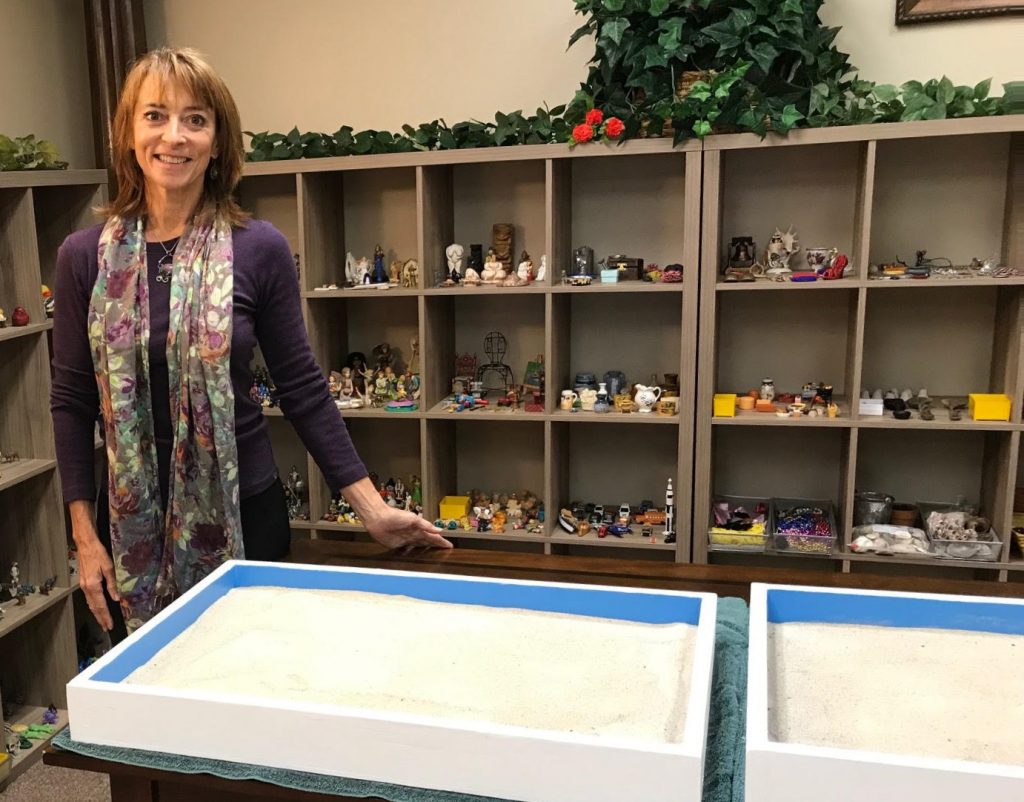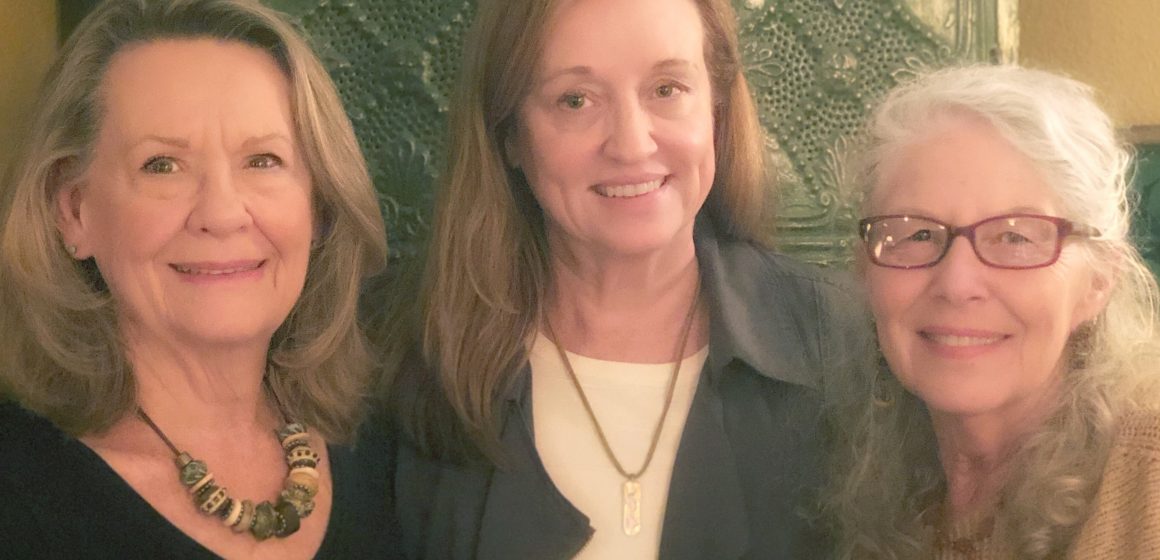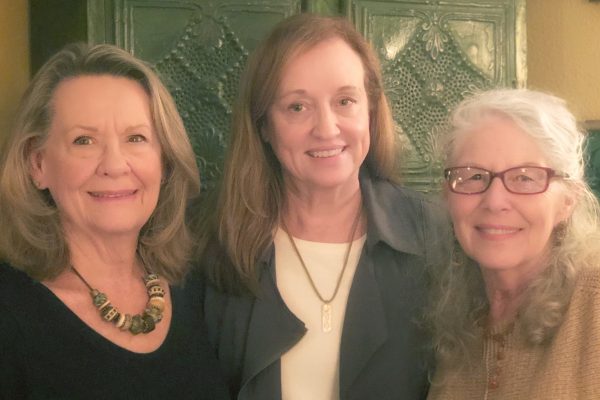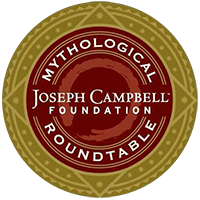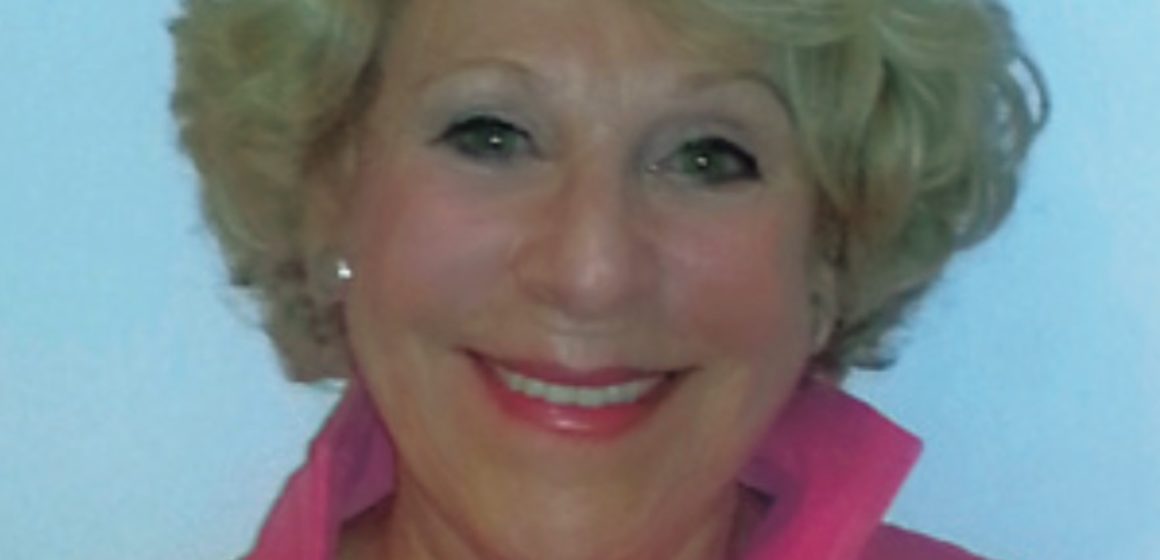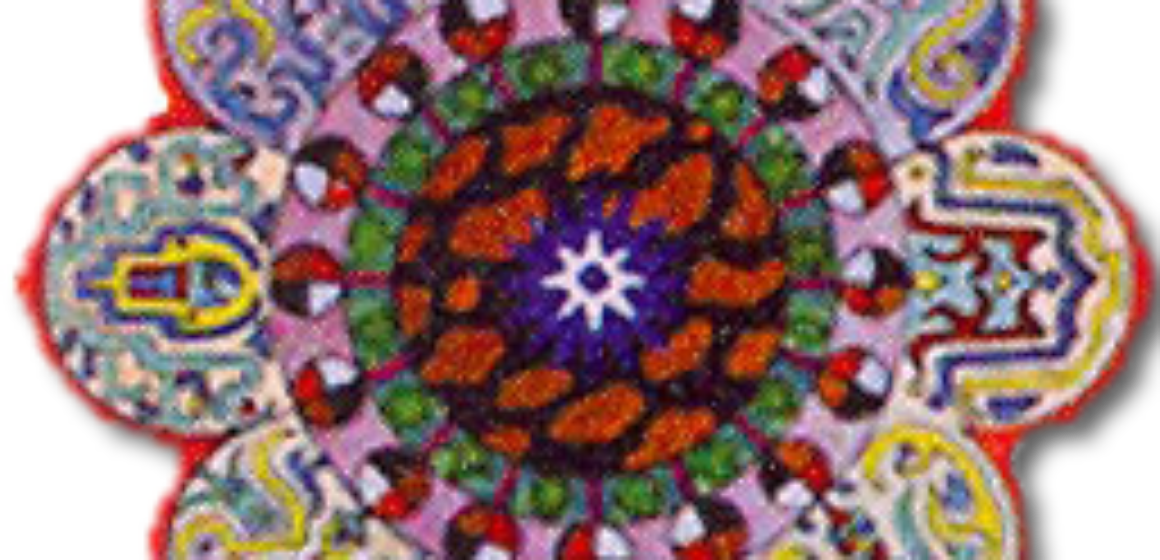A Brief Introduction to Jungian Sandplay Therapy
by Karen Hartfield
Dora Kalff, a Swiss Jungian analyst, developed Jungian-based sandplay therapy in the mid 1900s around three defining influences in her life. As one of Jung’s students, she embraced Jungian theories of psychology and the power of the unconscious in her own practice. She also adapted and expanded what she learned from contemporary child therapist Margaret Lowenfeld’s extensive work with children and play. Finally, Kalff was exposed to Buddhist thought when she housed Buddhist monks who had fled their home country for political reasons. Sandplay therapy combines these influences in its recognition of the deep wisdom and import of the psyche, the concepts of presence, and the creation of a sacred space for healing.
Jungian-based sandplay therapy uses two trays filled with sand (one dry, one damp) and a variety of miniatures that can be placed in the trays to create a three-dimensional scene or image. Through allowing this simple act of imagination and creation, the trays provide a means of expressing and processing experiences and feelings that bypass the thinking, analytical brain and access the unconscious. This can bring to light what is not otherwise visible. According to Jung, symbol is the language of the psyche. By providing a safe opportunity for the psyche to express itself through symbol, healing can come, not from the interpretation of the “completed” image, but in the expression of the image itself.
Jung wrote: “Often the hands know how to solve a riddle with which the intellect has wrestled in vain.”
Our thoughts often lead in circles; engaging a different and more visceral form of expression can break the cycle and create new and deeper understanding.
Each aspect of sandplay therapy is important. The tray offers a safe, contained space in which to process and explore. The sand provides a visceral, grounding means of connection. (Jung himself experienced the powerful healing properties of playing and working in sand). The miniatures are the symbols that communicate multiple layers of conscious and unconscious thoughts and experiences. And the sandplay therapist is the witness that holds the protected space in which this sacred and often numinous process can transpire.
Sandplay Therapy As Personal Process
Sandplay therapy is beneficial for both adults and children. It can be used in conjunction with other forms of therapy, and encourages the process of self-discovery and healing.
However, sandplay therapy is not only for those dealing with specific issues. Those who are seeking a deeper understanding of themselves and a desire to live more consciously can also choose to explore themselves through a sandplay therapy process.
“In sandplay therapy, through the free and protected space, the individual is able to penetrate the depths of the personality and experience the Self. From this ground, a more naturally balanced relationship between the ego and the Self manifests. When this occurs, one has the opportunity to live life in a more conscious, authentic manner,” according to Sandplay Therapists of America, a nonprofit organization that promotes education, training and research in sandplay therapy.
Allowing expression through the use of symbols, within a safe and protected space, touches into the personal underground connections that reach forward and back, and into the many layers of the psyche, shifting one’s internal state and one’s experience of the world in subtle and profound ways.
Karen Hartfield is a Licensed Mental Health Counselor and Sandplay Practitioner with Sandplay Therapists of America. She is the STA Regional Rep for Florida. She continues to expand her study of and involvement in this modality; in 2018 she also participated in a week long training with the International Institute for Sandplay Therapy in Malta. Her practice, Fearless Heart Counseling, is located in Venice. For more information visit Fearlessheartcounseling.com or call 941.301.7490.
